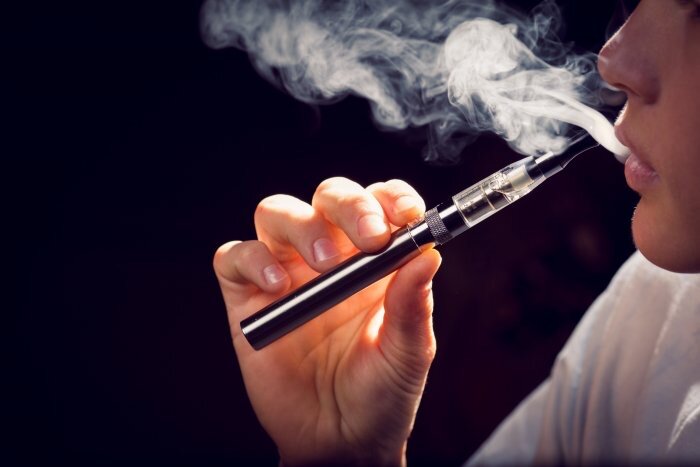Vaping is getting our attention. According to a recent Journal of the American Medical Association study, nearly 28% of US high schoolers and 10% of middle schoolers report vaping. Vaping is the inhaling of a vapor created by an electronic cigarette (e-cigarette) or other devices. The e-cigarettes or ‘vapes’ come in many different shapes and sizes but most are small- some even look like USB flash drives. Vaping is particularly common among 12-16-year-old teens since it is small, discrete, odorless, and easy to hide in a backpack and use in a bathroom or classroom. The nicotine in vaping can be very addictive which in time can affect brain development, memory, concentration, self-control and mood.
Studies show that vaping makes it more likely that a teen will try other drugs, such as regular cigarettes. The substances found in e-cigarettes have been linked to serious respiratory problems and hospitalizations among teens. Teens sometimes feel that e-cigarettes are not as harmful as regular cigarettes since e-cigarettes were developed to help addicts cut back. However, it is important to know that e-cigarettes are very addictive to children and teens (with developing brains), compared to adults. Young people’s brains build synapses or connections faster than adult brains. Nicotine changes the way these synapses are formed.
Signs of vaping in teens include nosebleeds, less need for caffeine, increased energy levels, unexplained charges on bills, and vape-related accessories like USB drives, or battery chargers. It is important to have an open and honest discussion with your teen as to why they may be vaping, if they feel pressure from peers to do so, and the health issues that can arise. Getting kids to stop vaping can be tricky. Here are a few tips:
Build on respect -One approach is to build on teen’s desire for respect. According to the Center for the Developing Adolescent, “traditional programs that encourage healthy behavior by increasing awareness of the harmful consequences are not always effective and can even be counter-productive during the teen years”. One reason may be that when teens hear adult messages about what they “should” do to lead a healthier life, they can consider these messages as insulting at a time when they desire respect and control of their decision making. In discussing vaping, I tell teens that the design and flavors are aimed at a young audience. Also, that if you they are vaping by age 14-15, you are more likely continue smoking through adulthood. As a result, teens are being ‘targeted’ to become lifelong users and that they need to fight back.
Not everyone is doing it- I also tell teens that although it seems very common, most kids are NOT vaping and its ok to say no. It is also helpful to ask friends to help them to stop vaping.
Consider an educational program-There are many online and educational programs available for teens. For example, This is Quitting is a smoking cessation program developed by Truth Initiative and the Mayo Clinic which delivers tailored text messages that provide age-appropriate quitting advice.
Talk to a provider -Finally, I highly recommend that teens speak to a counselor or health provider to discuss ways to stop and alternate strategies to handle stress and peer pressure.
For more information:
https://yourteenmag.com/health/physical-health/how-to-help-a-teen-stop-vaping
